

“He (Jacob) spent the night there…and lay down in that place. He dreamt… A ladder was set earthward and its top reached heavenward; and … angels of G-d were ascending and descending on it…G-d was standing over him, and He said “I am Hashem, G-d of Abraham, you forefather and G-d of Isaac. The ground upon which you are lying, to you I will give it and… your descendants… Jacob arose from his sleep and said “Surely G-d is present in this place…and he took the stone… and set it up as a pillar…and he named the place Bethel (Beit El) (Genesis 28:11-19)”.

Photo taken from the Public Domain
Today, we will be exploring a real treasure! Although one of the most climatic and consequential events in the Bible took place here, few tourists ever visit. You shall soon see, however, why this site is not to be missed!
Beit El is initially mentioned when Abraham and his household first entered the land of Israel. G-d had told him to leave his homeland and go to the land “Which I will show you (Genesis 12:1)”. After arriving in Israel from Haran (part of modern-day Turkey) he journeyed southwards, eventually arriving in Beit El where he pitched his tent temporarily and set up an altar to Hashem (G-d) and invoked Hashem by name (Genesis 12-8).
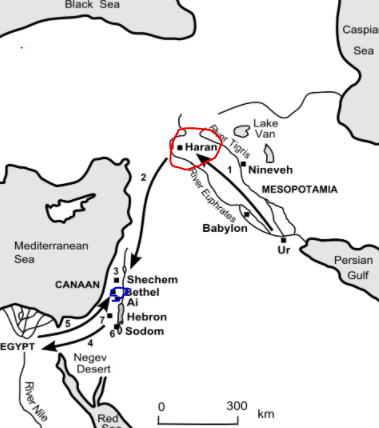
Photo Credit: Credit: https://www.thebiblejourney.org/
Eventually, Abraham traveled further south, ultimately settling in Beer Sheva (often spelled Beersheba). Two generations later, Abraham’s grandson Jacob fled Beersheba (click here to see article) to get away from his murderous brother Esau, returning to Haran to find a wife (Rebecca did not want her son to marry a local Canaanite, so his father Isaac instructed him to return to Haran to get married). On the way, the sun set when Jacob had arrived to Beit El, so he spent the night there out in the open.
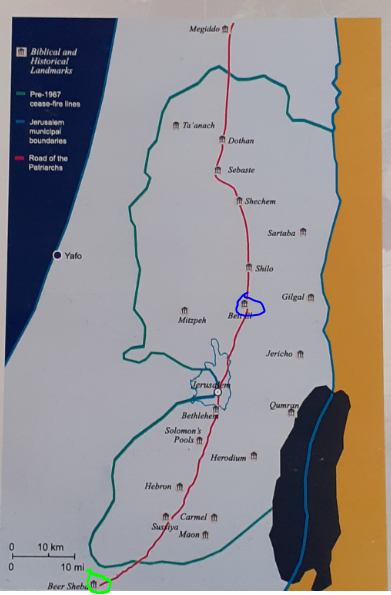
Why does the Bible make a specific mention of the sun setting (Genesis 28:10)? According to Jewish sources, Jacob was praying there to G-d when he heard Angels having a discussion. Jacob then realized that he was standing in a very holy site connected with heaven. However, with a long journey ahead of him and several hours ahead in the day, he was about to leave when G-d caused the sun to set early, so Jacob would spend the night there and G-d would reveal Himself in a dream (the spot was especially conducive to higher levels of prophecies).
Jacob then took stones from the site, placing them around himself to protect him from wild animals. According to Jewish sources, it was exactly 12 stones, representing the 12 sons he would have who would make up the tribes of Israel. While he slept, the stones combined into one big stone (the one he was using as a pillow) which signified that all 12 of his sons would be righteous and follow in his ways.

Later, a Canaanite city-state emerged at Beit El with its own King. Joshua and his army defeated them upon entering Israel, and the land fell within the territory of Ephraim.

Hundreds of years later, after King Solomon died, the Kingdom split in two and Beit El found itself in the Northern Kingdom of Israel.
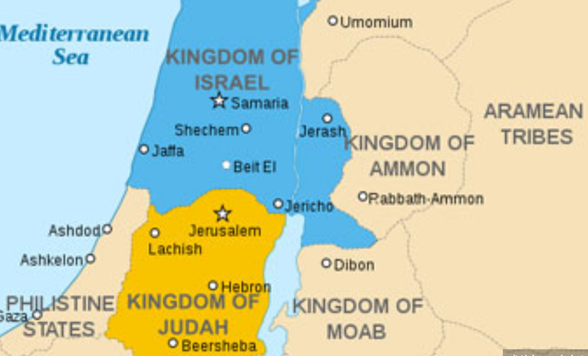
Photo Credit: Oldtidens_Israel_&_Judea.svg: – CC BY-SA 3.0
The Kingdom of Israel was to be ruled by the (initially) righteous Jeroboam with his capital in Samaria, while the southern Kingdom continued to be ruled by Solomon’s son Rehoboam with Jerusalem as its capital.
Unfortunately, power quickly got to Jeroboam’s head, and he made some fateful decisions. When the Temple stands, all Jews are obliged to travel to Jerusalem at least three times a year: Passover, Shavuot, and Sukkot. Jeroboam was worried that when his subjects (all of whom were Jewish) would go to Jerusalem, their hearts would turn towards the ruler of Judah, and they would begin to see him as only a secondary king and eventually overthrow him. He therefore decided to set up new places of worship, complete with Golden calves, in Beit El and Dan ( 1 Kings 12:28-29). He even made up his own holidays and declared himself a priest, burning incense to the calves in Beit El. Ultimately, these misguided fears brought the Kingdom of Israel to spiritual ruin. This, according to Jewish sources, is the reason the northern Kingdom was exiled 133 years earlier than the more righteous southern kingdom of Judah. Ultimately, his descendants continued in his wicked ways and were eradicated from the face of the earth (1 Kings 13:33-34) with Jeroboam having no portion in the World to Come.
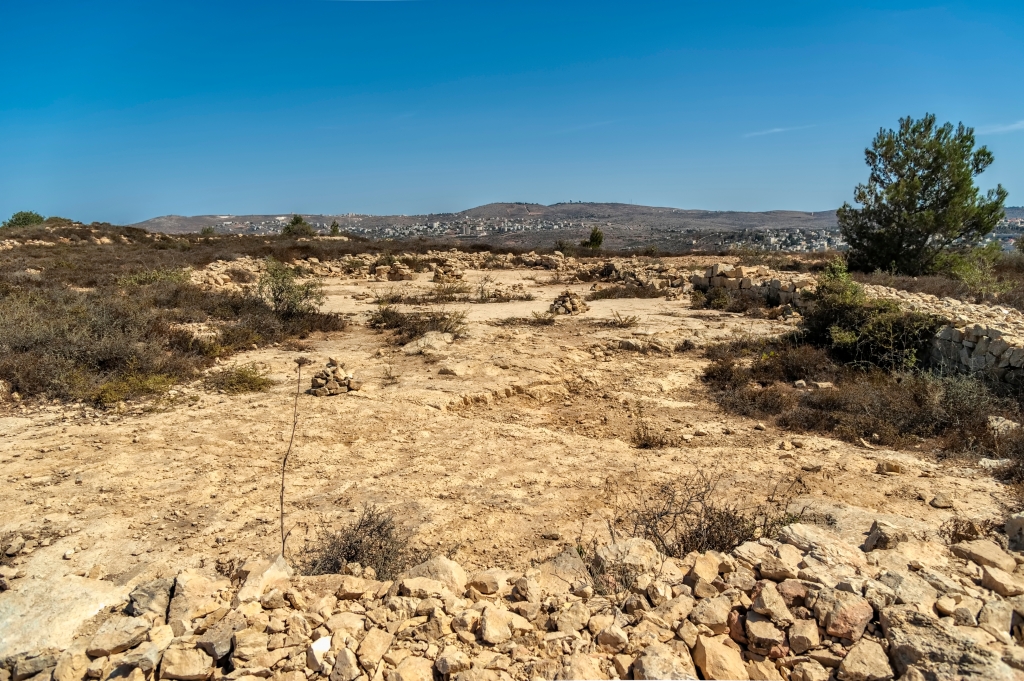
Photo Credit butterflycreationfoto / Shutterstock
A few hundred years later, the righteous King Josiah of Judah destroyed this “High place” of Beit-El (2 Kings 23:15). Soon after, Babylonia conquered Israel and destroyed Beit El.
The Persians who conquered the Babylonian empire 70 years later rebuilt Beit El, and when the Greek forces of Alexander the Great conquered the land from them in 332 BCE, the city continued to grow. In the second century BCE when the Hellenists (Greek) forces fought the famous Jewish rebels known as the Maccabees, they fortified the city, though ultimately the Maccabees were successful and expelled the Greeks from Israel, thus re-establishing Jewish sovereignty for the next 80 years in all of Israel (The Jewish holiday of Chanukah is connected to these events).
In the 1100s, the Crusaders built a chapel on this site. When the Muslims expelled the Crusaders, they built a mosque here as well.
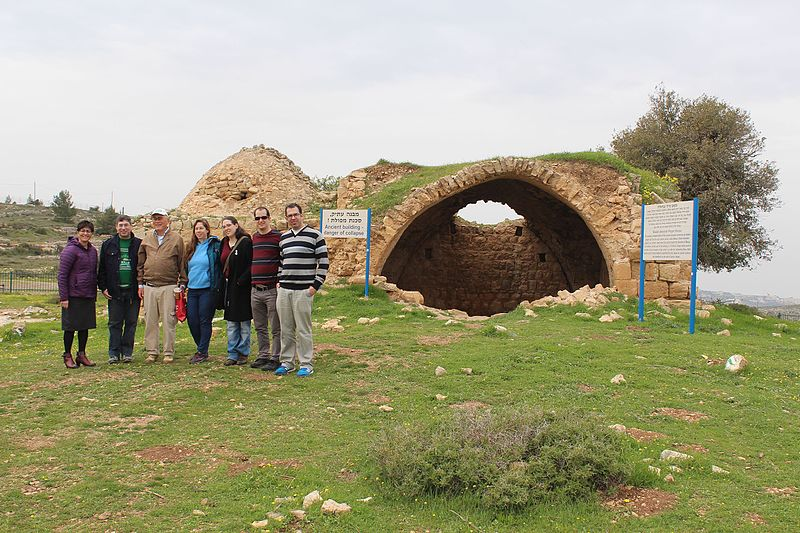
Photo Credit Elef Millim project – CC BY-SA 4.0
Between 1948-67 Jordan controlled this land, and when Israel liberated Judea and Samaria (West Bank) they re-established a Jewish settlement here. Today, the population is about 6200, with many new houses being built.

Photo Credit: יעקב – CC BY-SA 3.0
Today, Beit El has much to offer to tourists of all ages! On your next trip, let us plan on visiting this treasure together!
Please visit the author’s Israel tour guiding site: https://guidedtoursofisrael.com
Relive Beit El with Nosson Shulman on your very own private luxury Israel tour. For a sample that includes Beit El, click here
(All images are public domain or leased by the author)





![Sacred Rage! – Pull Up a Chair [audio]](https://www.jewishpress.com/wp-content/uploads/2025/02/baby-623417_640-218x150.jpg)
![Victory In Gaza – The Jay Shapiro Show [audio]](https://www.jewishpress.com/wp-content/uploads/2025/02/injury-6860646_640-218x150.jpg)












